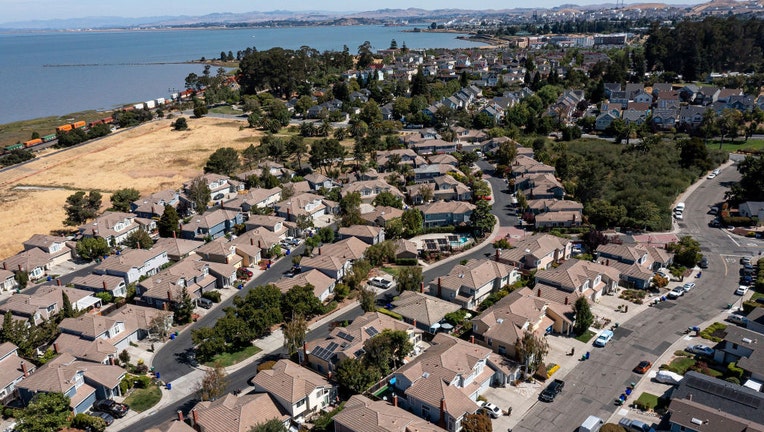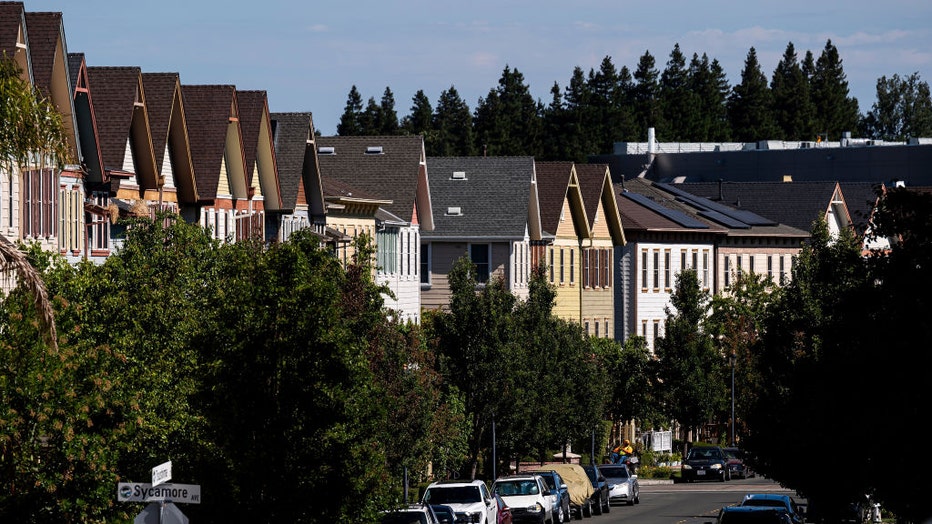Why are home prices so expensive? Blame the boomers, Barclays says

Homes in Hercules, California, US, on Wednesday, Aug. 16, 2023. (David Paul Morris/Bloomberg via Getty Images)
U.S. home prices across the country are surging even with the astronomical rise in mortgage rates, putting ownership out of reach for millions of Americans.
The spike in interest rates – which topped 7% last year for the first time in two decades – has created a "golden handcuff" effect in the housing market: Sellers who locked in a record-low mortgage rate of 3% or less during the pandemic began have been reluctant to sell and take on a more expensive option, leaving few options for eager would-be buyers.
The number of available homes on the market at the end of August was down by more than 9% from the same time last year and down a stunning 45% from the typical amount before the pandemic began in early 2020, according to a recent report from Realtor.com.
THE 4 US CITIES FACING BIGGEST HOUSING SHORTAGE
But there's another factor driving home prices higher, according to Barclays economists; baby boomers. In a recent analyst note, titled "Blame the Boomers," the strategists argued the aging of America is spurring more household formation.

Homes in Hercules, California, US, on Wednesday, Aug. 16, 2023. (David Paul Morris/Bloomberg via Getty Images)
"The US housing sector is on the upswing again, even with mortgage rates at multi-decade highs," the strategists, led by Jonathan Millar, wrote. "Although much has been attributed to shortages of existing properties and mortgage lock-in effects, we think strong demand is a symptom of the aging population."
It may seem "paradoxical," because an aging population tends to require fewer homes. But that's not the case with the baby boomers, who are currently between the ages of 57 and 75. Boomers are reaching retirement age and forming new households, either due to divorce or death, but they aren't freeing up existing supply.
The formation of households drives demand for both homeownership and rentals. Formation refers to the change in the number of households – of persons living under one roof – from one year to the next. It often happens when young people move out of their parents' homes, or when a couple divorces.
HOUSING AFFORDABILITY PLUMMETS TO LOWEST LEVEL SINCE 2007 AS PRICES JUMP
"While it is likely true that older people tend to prefer smaller housing units, it is not true that an older population requires fewer housing units," Millar said.
Although there have been "notable" increases in demand from the younger population, nearly all additional demand is explained by the aging population and significant increases in households, according to the analysis.
Barclays anticipates the imbalance between excessive demand among boomers and limited supply to last for several years.
"Data suggest that demographics are likely to support demand for the foreseeable future, consistent with annual household formation of around 1.3mn units through the end of the decade," the Barclays analysts said. "Meanwhile, the accumulated shortage of new housing units remains considerable, putting upward pressure on house prices and rents, thereby encouraging additional construction."
Get the latest updates on this story at FOXBusiness.com

